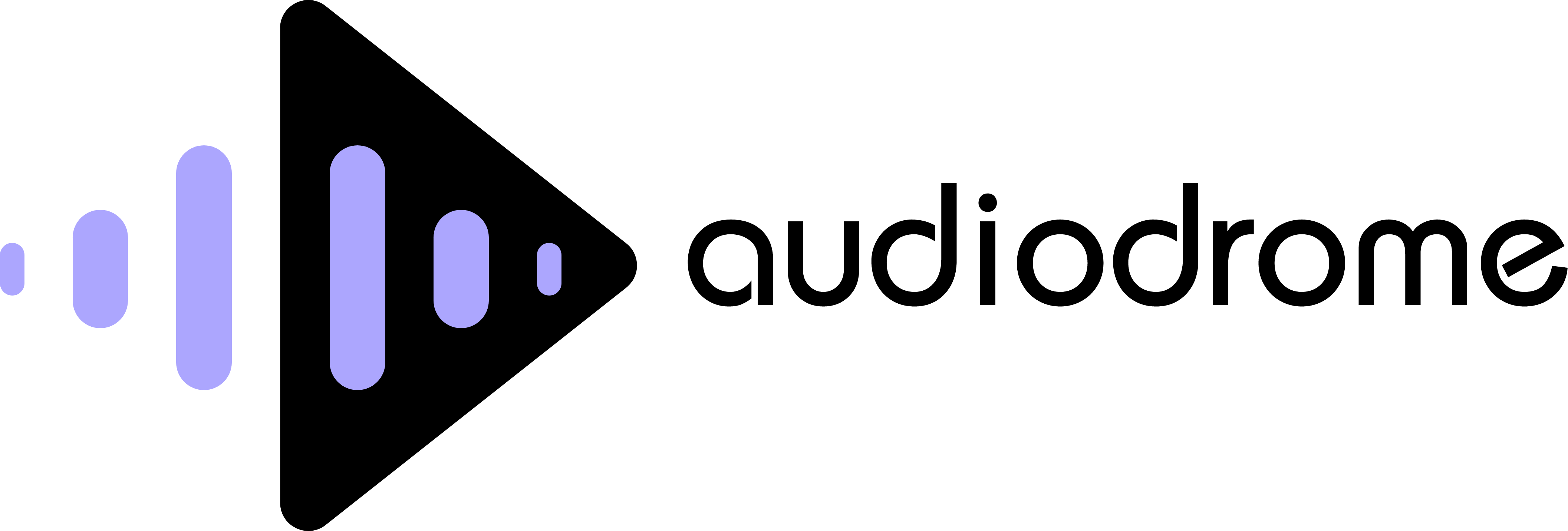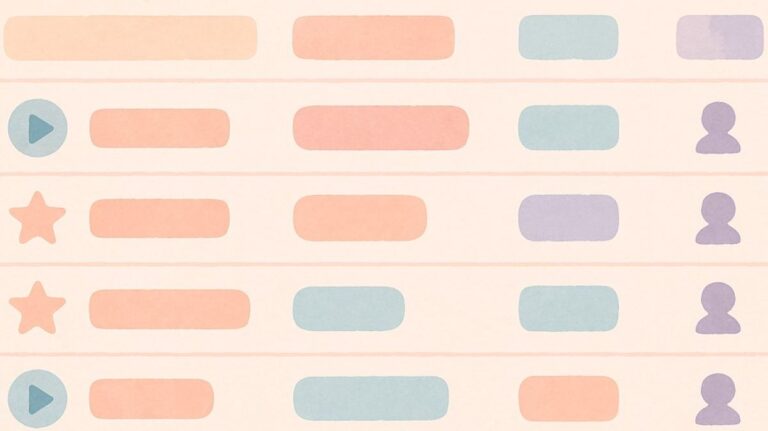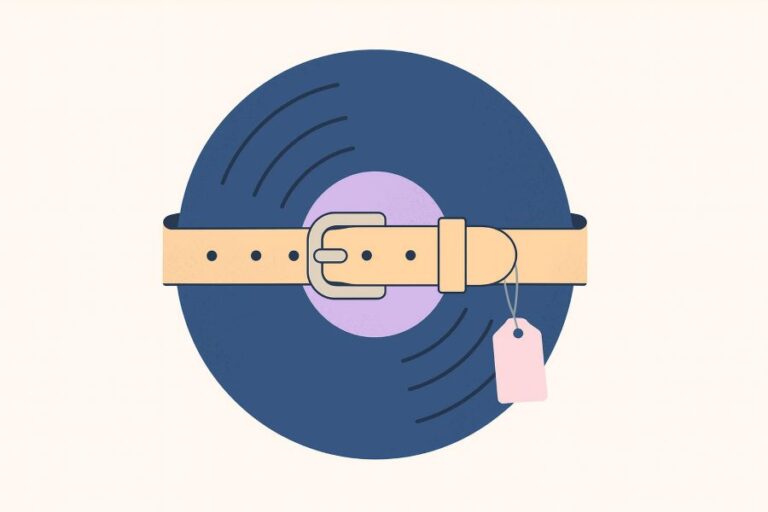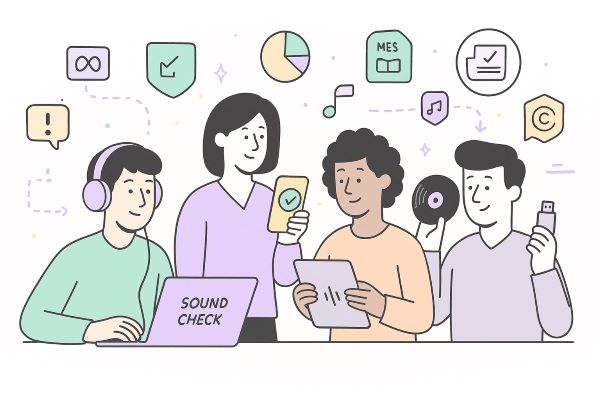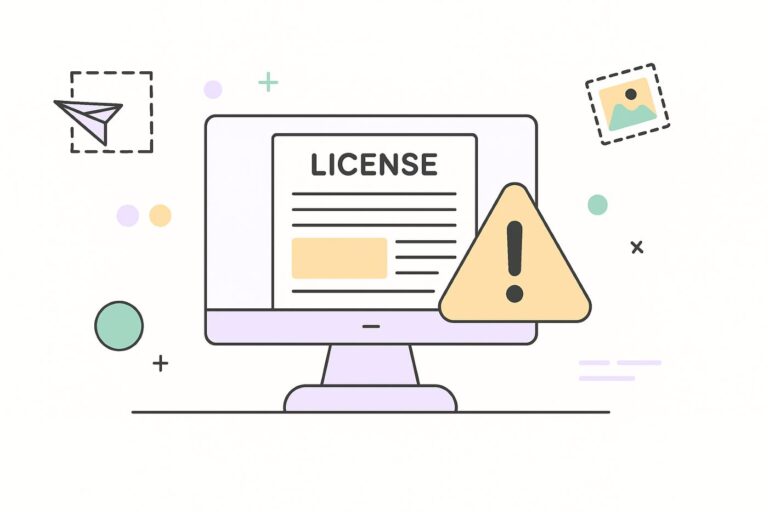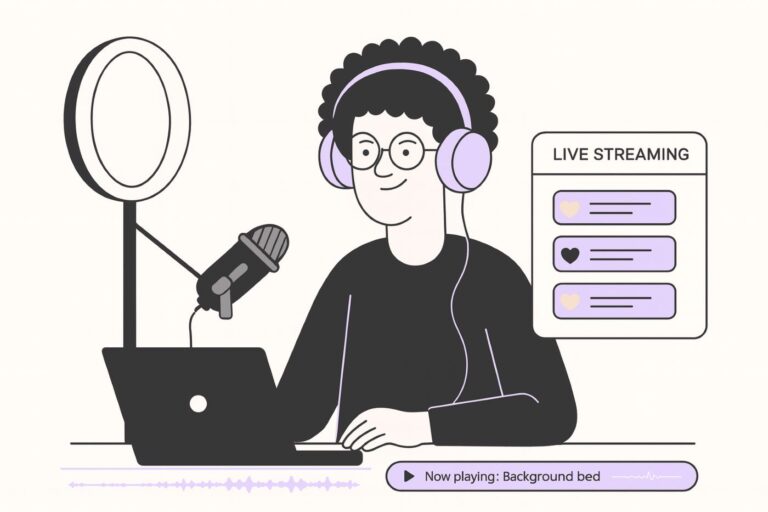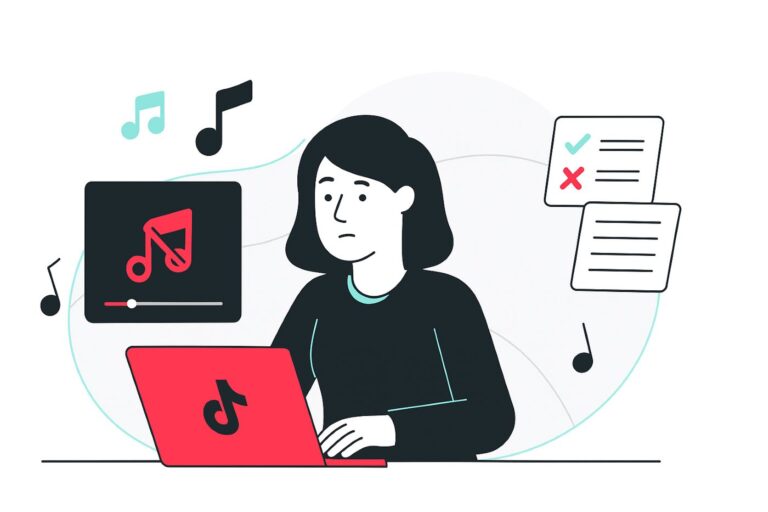YouTube Copyright Strike: What Triggers It, Channel Risks & Fix Paths (2025)
Audiodrome is a royalty-free music platform designed specifically for content creators who need affordable, high-quality background music for videos, podcasts, social media, and commercial projects. Unlike subscription-only services, Audiodrome offers both free tracks and simple one-time licensing with full commercial rights, including DMCA-safe use on YouTube, Instagram, and TikTok. All music is original, professionally produced, and PRO-free, ensuring zero copyright claims. It’s ideal for YouTubers, freelancers, marketers, and anyone looking for budget-friendly audio that’s safe to monetize.
On YouTube, a claim changes policy and your revenue. A strike pulls your video and puts your channel at risk. This guide shows what triggers each action, where the deadlines are, and the exact steps to fix it fast with retraction or a counter notice.
Definitions & How Strikes Differ from Claims
A copyright strike means YouTube removed your video after a legal copyright removal request. A person or company filed that request, and YouTube reviewed it to comply with copyright law. The strike lives on your channel until you resolve it or it expires.
/Definitions%20%26%20How%20Strikes%20Differ%20from%20Claims%201.jpg)
Content ID claims come from automated matching and usually keep your video online with a policy that can block viewing, monetize with ads, or track stats. A copyright strike removes the video and counts against your channel. A Community Guidelines strike is about policy rules, not copyright.
/Definitions%20%26%20How%20Strikes%20Differ%20from%20Claims%202.jpg)
Rights holders trigger strikes by sending removal requests. Their Content ID settings trigger claims that block, monetize, or track, sometimes only in certain countries. YouTube reviewers issue Community Guidelines strikes. Outcomes differ. Strikes remove content and affect channel standing.
/Definitions%20%26%20How%20Strikes%20Differ%20from%20Claims%203.jpg)
What Triggers a Strike
A strike starts when someone files a copyright removal request for your video. They can submit it in YouTube Studio using the legal form, or send the required details by email, fax, or mail. This process can also cover non-video assets such as channel images.
/What%20Triggers%20a%20Strike.jpg)
You may see a scheduled takedown. This option gives you seven days to act and avoid a strike. In that window, you can delete the video, request a retraction, or cancel a pending appeal of a Content ID claim if that appeal triggered the schedule.
Immediate impact of a strike
YouTube sends an email explaining why your video was removed and how to resolve the issue. Official notices come from no-reply@youtube.com. Sign in through the official site to review details rather than clicking links in the message. Keep that email for your records.
With one strike, YouTube removes the video and you can clear the strike after Copyright School and 90 days. With two strikes, the same rules apply while risk increases.
/Immediate%20impact%20of%20a%20strike%201.jpg)
With three active strikes in 90 days, YouTube can terminate your channel. You cannot create new channels.
/Immediate%20impact%20of%20a%20strike%202.jpg)
If YouTube removes an active live stream for copyright, you receive a strike and lose live streaming access for 7 days. If your channel gets another copyright strike, the live streaming restriction lasts 14 days. Plan streams with this risk in mind.
To see strike details in Studio, sign in and check Dashboard → Active copyright strikes. Or open Content, filter by Copyright, find the removed video, hover over Restrictions, and click See details. You will find impact on your channel, claimant info, and the matched segments.
/Immediate%20impact%20of%20a%20strike%203.jpg)
Linked channels share termination risk. If a channel linked to yours reaches three active copyright strikes, your channel is also subject to termination. The reverse is true as well. Keep access and ownership links tidy and limit who controls related channels.
The three resolution paths
You can clear a copyright strike in three ways. You can wait for it to expire after Copyright School, ask the claimant to retract the removal request, or submit a legal counter-notification if the takedown was a mistake or a misidentification.
Wait-out & Copyright School
Strikes expire in 90 days only if you complete Copyright School and your channel has fewer than three strikes. If you skip Copyright School, the strike stays active, which keeps the related limits on your channel until you resolve it another way.
/Wait-out%20%26%20Copyright%20School.jpg)
You only need to pass Copyright School once. After you pass, future strikes clear on day 90 from the date applied as long as you stay below three active strikes during that period. YouTube lists this option alongside retraction and counter-notification as valid resolutions.
Retraction by the claimant
A retraction means the original claimant withdraws the copyright removal request. Claimants can retract in YouTube Studio by opening Copyright → Removal Requests, expanding the item, and choosing RETRACT REMOVAL or RETRACT REQUEST for scheduled removals. Retractions can also be sent by email with required details.
/Retraction%20by%20the%20claimant.jpg)
Practical steps when you request a retraction: contact the claimant directly and explain why the takedown should be withdrawn. Share proof such as your license, receipt, or written permission that covers the exact use. YouTube confirms uploaders may ask claimants for a retraction. I cannot confirm any specific proof the claimant must accept.
Counter notification (legal)
Use a counter notification if the removal was a mistake or a misidentification, including uses that may qualify for fair use, fair dealing, or public domain. You can submit in Studio or by email, fax, or mail. This is a legal request to reinstate the content.
Counter notification: exact requirements and submission details
You can submit a counter notification in YouTube Studio for removed videos. You can also submit by email, fax, or mail. Non-video items like channel images use email, fax, or mail. An authorized representative can submit on your behalf if you prefer.
Your notice must include your full legal name, physical address, and telephone number. You must state that the removal was a mistake or misidentification, consent to the appropriate federal court’s jurisdiction, agree to accept service from the claimant, and provide a physical or electronic signature.
/Counter%20notification%20exact%20requirements%20and%20submission%20details%201.jpg)
In Studio’s counter notification flow, finish on “Provide rationale”: explain in your own words why removal was a mistake (license, misidentification, fair use, public domain). Tick the legal statements, type your full legal name as an electronic signature, review summary, and click Submit. YouTube forwards your notice.
/Counter%20notification%20exact%20requirements%20and%20submission%20details%202.jpg)
Reply by email only through the counter-notification thread YouTube forwarded to the address used for your original removal request. Attach a copy of court-filed evidence; cloud links (e.g., Google Drive) aren’t accepted. Reply directly to the thread – don’t start a new message to YouTube.
/Counter%20notification%20exact%20requirements%20and%20submission%20details%204.jpg)
After YouTube forwards a valid counter notification, the claimant has 10 US business days to send evidence of legal action to keep the content down. If they do not provide that evidence on time, YouTube reinstates the video and clears the strike on your channel.
/Counter%20notification%20exact%20requirements%20and%20submission%20details%203.jpg)
If the claimant files legal action within that window, the video stays down while the dispute proceeds. The strike and removal remain unresolved during that period until the legal process or a settlement changes the status.
Do not file a counter-notification if you used unlicensed content. YouTube warns that misuse can lead to account termination and other legal consequences. YouTube also shares your counter-notification with the claimant, so consider privacy and risk before you proceed or ask an attorney to represent you.
Special cases creators often miss
If the takedown is scheduled, you get seven days to act so you avoid the strike. Delete the video during that window, ask the claimant for a retraction, or cancel an appeal that triggered the schedule for a rejected Content ID claim. After seven days, deletion no longer helps.
If your video uses multi-language audio or auto-dubbing, a removal request can target only the infringing track. YouTube shows which track is in scope. You may replace or remove that language track and keep the rest of the video available. Check the “Infringing audio track” note.
Rights holders can request that YouTube prevent future uploads of the same content. This setting helps keep fresh uploads of the removed material from reappearing. Expect continued enforcement if you repost the same footage without permission.
Deleting a video usually does not clear a strike. Only scheduled takedowns give you a deletion option that avoids the strike, and it must happen within the seven-day window. In all other cases, the strike remains until you resolve it by the normal paths.
Claim vs. Strike vs. Community Guidelines
This matrix explains how each action starts, what happens to the video, how your channel is affected, how you can respond, key deadlines, and when termination risk applies.
Trigger
A Content ID claim starts when YouTube’s matching system detects copyrighted material in your upload. The copyright owner’s preset policy then applies. This path uses automation and does not require a legal notice.
A copyright strike starts when a rights holder files a copyright removal request. YouTube reviews the request and removes the video if the request appears valid under copyright law. This path uses a legal notice.
A Community Guidelines strike starts when YouTube reviewers find a policy violation. It covers safety and content rules that are unrelated to copyright. This path uses human review and platform policies.
Video status
With a Content ID claim, your video usually stays online. The claimant’s policy can block viewing, monetize with ads, or track viewership. These actions can apply worldwide or only in selected regions.
/Video%20Status%201.jpg)
With a copyright strike, YouTube removes the video to comply with copyright law once the removal request appears valid. The strike attaches to your channel.
/Video%20Status%202.jpg)
With a Community Guidelines strike, YouTube enforces penalties on features and publishing. The violating content does not remain available. During the penalty period scheduled public videos switch to private until the freeze ends.
Channel standing
Content ID claims usually do not change overall channel standing. They apply only to the specific video under the claim policy.
Copyright strikes and Community Guidelines strikes both count against your channel and can limit features. Accumulating multiple strikes increases enforcement and can lead to termination.
Dispute path
For Content ID, you can dispute a claim in Studio. If the claimant rejects the dispute, you can appeal. These steps address the claim without turning it into a copyright strike unless the claimant escalates with a legal removal request.
For copyright strikes, you have three options. Wait for expiration after Copyright School, ask the claimant for a retraction, or submit a legal counter-notification if the takedown was a mistake or a misidentification.
Deadlines
A Content ID dispute gives the claimant up to 30 days to respond. If they reject your dispute and you appeal, they typically have a shorter window to respond to the appeal.
/Deadlines.jpg)
A valid counter notification starts a 10 US business day window for the claimant to provide evidence of legal action. If they do not do so in time, YouTube reinstates the video and clears the strike. Termination rules follow strike thresholds, not these deadlines.
Thresholds
Copyright strikes follow the three strikes in 90 days rule. Three active copyright strikes in a 90-day window can lead to channel termination and loss of access to upload or create new channels.
/Thresholds.jpg)
Community Guidelines strikes follow a similar rule. Three strikes within 90 days may result in permanent removal of your channel. Penalties escalate with each strike before that point.
Quick Table
| Aspect | Content ID claim | Copyright strike | Community Guidelines strike |
|---|---|---|---|
| Trigger | Automatic match (owner policy applies). | Legal removal request from rights holder. | Human review finds policy violation. |
| Video status | Usually stays up; may block/monetize/track. | Removed; strike attached to channel. | Unavailable during penalty; publishing limited. |
| Channel impact | No channel strike. | Counts toward termination thresholds. | Counts toward termination thresholds. |
| Your options | Trim/replace/mute or dispute → appeal. | Copyright School + wait, retraction, or counter. | Appeal per CG process. |
| Key deadline | Claimant response up to ~30 days. | Counter → 10 US business days for court proof. | Platform-set appeal windows. |
| Special timing | Dispute in 5 days to hold revenue from claim date. | Scheduled takedown: 7 days to act and avoid strike. | Severe abuse can mean immediate removal. |
| Termination risk | None from claim alone. | 3 strikes in 90 days → termination possible. | 3 CG strikes in 90 days → removal possible. |
Evidence & communication templates
Use clear proof and plain language. Start with documents that show your right to use the material, then contact the claimant professionally. If a takedown was a mistake or misidentification, you can submit a legal counter notification that meets the Help page requirements.
What to assemble before you contact the claimant
Gather the license or written permission, the invoice or receipt, any license ID or order number, upload date and timestamps for the matched segment, and links to the exact video and timecodes. Include public domain or Creative Commons documentation if relevant. I cannot confirm YouTube requires these specific proofs, but claimants often ask for them.
Email template requesting retraction
Hello [Claimant or Agent],
I received a copyright removal request that removed my YouTube video at [full URL]. I believe this takedown was a mistake because I have the right to use the material. My proof includes [license ID or contract reference], purchase receipt dated [date], and the segment used from [mm:ss] to [mm:ss].
Would you please retract the removal request for this video? In YouTube Studio you can open Copyright, choose Removal Requests, expand the item, and select Retract Removal. If the removal is scheduled, select Retract Request. I appreciate your help and I am available for any clarification.
Counter notification template checklist
A counter notification is a legal request to restore a removed video. Submit it in YouTube Studio for videos or by email, fax, or mail. Include your full legal name, address, phone, and a statement that the removal was due to mistake or misidentification, with consent to court jurisdiction and acceptance of service. Sign it physically or electronically.
Here is plain text you can adapt:
“I, [full legal name], reside at [full address], phone [number], email [address]. I believe the material at [URL] was removed due to a mistake or misidentification. I consent to the jurisdiction of the Federal District Court for the district where my address is located or, if outside the United States, to the Federal District Court for the Northern District of California. I will accept service of process from the claimant. I state under penalty of perjury that this notice is accurate and that I am the owner or authorized to act on the owner’s behalf. [signature and date].”
48-hour action plan (checklist)
Day 0. Save everything. Download the original file and keep upload logs, edit logs, and publish dates. Read the strike email in full, then open See details in Studio to review the takedown entry, the matched segments, and channel impact. Take screenshots for your records.
/What%20you%20can%20do.jpg)
Day 0–1. Choose your path. If you have a valid license or written permission, contact your licensor and the claimant at the same time to request a retraction. If the takedown looks wrong but you lack quick retraction, evaluate a counter notification with care.
Day 1–2. File a counter notification only if you are certain the removal was a mistake or a misidentification. Once YouTube forwards a valid counter, the claimant has 10 US business days to show evidence of legal action. Track that clock in your notes.
YouTube Copyright Checker (free tool)
Run a fast music rights preflight that maps monetization, licenses, edits, and territories to risk, then fix issues in minutes so claims do not stall releases, reroute revenue, or embarrass clients. Protect schedules, budgets, and your channel’s trust today.
YouTube Content Preflight
Check your content for potential issues before uploading
Preflight Results
Embed This Tool on Your Website

Compliance & prevention
Keep every license, receipt, and permission email in a labeled folder for each project. Store license IDs, purchase dates, and permitted uses next to the final video. Avoid vague “free” libraries that cannot show ownership. Pre-clear music from royalty-free catalogs or direct licenses so your uploads have traceable rights.
If you publish for a business, keep cue sheets that list each track, composer, publisher, duration, and usage. Save stems and final mixes. Keep licensor contact names and support emails in your asset log. This documentation speeds retractions, renewals, and audits and reduces downtime if a dispute hits.
Your Next Move, Not Next Month
Before the clock runs out, gather proof, choose your path, and document every step. Claims can be resolved, strikes can be cleared. What matters is speed and accuracy. Use the checklists here to protect revenue, restore videos, and keep publishing without surprises.

Audiodrome was created by professionals with deep roots in video marketing, product launches, and music production. After years of dealing with confusing licenses, inconsistent music quality, and copyright issues, we set out to build a platform that creators could actually trust.
Every piece of content we publish is based on real-world experience, industry insights, and a commitment to helping creators make smart, confident decisions about music licensing.

